Interview: Author Dinty W. Moore on 'The Rose Metal Press Field Guide to Writing Flash Nonfiction'
|
|||||||||||||||||
|
The scholar John Rodden calls the literary interview a “fully-fledged genre.” I used to be skeptical, but after assigning my students at The College of Saint Rose to speak with an author, I’m more inclined to think the literary interview qualifies as a distinct form of performance. I put out a call on Facebook and Twitter: Would you speak to a college student about your book? I asked. Sure, they said. Review copies were sent, students selected authors, read and researched their work, and asked questions. - Daniel Nester, Contributing Word Editor |
AUTHOR DINTY W. MOORE ON ‘THE ROSE METAL PRESS FIELD GUIDE TO WRITING FLASH FICTION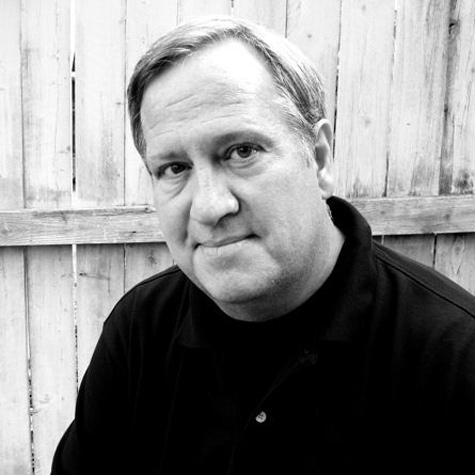 |
||||
INTERVIEWED BY
|
Who isn’t Dinty W. Moore? Creative nonfiction guru, editor, professor, writer; he has also delved into the practices of zoo keeping, modern dancing, waiting tables in Greenwich Village, filmmaking, and wire service journaling. Moore incorporates a keen knowledge and sensibility in all his projects, from editing the short nonfiction journal Brevity, to the memoir Between Panic & Desire, and his account of an accidental Buddhist, The Mindful Writer: Noble Truths of Writing Life. His newest work, The Rose Metal Press Field Guide to Writing Flash Nonfiction, is an impressively in-depth look at creative nonfiction in all its forms. When he isn’t mindfully writing and editing, he works in his organic vegetable garden at his Ohio home. DANIELLE SHINE: Abigail Beckel and Kathleen Rooney gave you credit for the idea for The Rose Metal Press Field Guide to Writing Flash Nonfiction. Where did it come from and what was it that brought it to print instead of the Internet? DINTY W. MOORE: The idea came from two previous books Abby and Kathleen had produced at their press. One was a field guide to flash fiction and the second was a field guide to prose poetry. It just seemed right to have the flash nonfiction version in the same format on the same shelf, so I sent them my proposal. SHINE: In terms of the controversy that you describe in the introduction of this book— subjectivity clashing with the genre of nonfiction, has there ever been a work of flash nonfiction submitted to you that was not believable? MOORE: On very few occasions I have had to send a note to an author saying, gently and diplomatically, “We really like this essay, but wanted to underline that we only publish nonfiction. So is this entirely accurate?” In those few instances, the author was quick to reassure us. Once in a while we get a piece written in the third person, and that is always problematic. But for the most part, we’ve had no real problems. SHINE: “Like literary fiction and poetry,” you write, “the nonfiction genre we discuss is marked by the distinct, often peculiar, voice and sensibilities of the author and these works examine the deeply human—and often unanswerable—questions that concern all serious art.” At what point was it that you put this definition of the sub-genre of writing into, if I might say, beautiful words? MOORE: I’ve been working my way up to that definition for some time, but—thanks for the kind words—it did seem to fall into a nice form when working on my introduction to The Rose Metal Press Field Guide to Writing Flash Nonfiction earlier this year. There is so much variety in creative nonfiction—from the journalistic to the memoiristic to the experimental to the lyric that one definition covering them all is difficult. I hope my description above is wide enough but also specific enough to be useful. SHINE: Did you personally select the pieces in the final edition and edit each one? MOORE: I solicited the pieces from authors who I knew had experience and a good sense of craft, and then worked with each of them individually to edit the final pieces. Abby Beckel and Kathleen Rooney, in addition to being the publishers, are also keen-eyed editors, and helped quite a bit as well. SHINE: Has there ever been a time in the editing process where the writer disagreed? How do you handle that? MOORE: In my experience, the more experienced and professional an author is, the more grateful he or she is for good editing. I know I feel that way when an editor works with me to improve my own work. So no, I haven’t really encountered many strong disagreements on either end of the writer-editor relationship. Sometimes there is some vigorous back and forth, in order to get a sentence or word exactly right, but it is almost always a fruitful back and forth. SHINE: What is it about flash nonfiction that makes you so passionate? How would you say it is different than all other forms of writing? MOORE: I like the quickness of the form, the ability within the form to crystallize a moment, a thought, or an emotional memory. As a teacher I like the short form because it allows for so many more opportunities in a classroom to study the essay and to try one’s hand at the essay. We learn from our mistakes, and five short works allow you to make many more mistakes, perhaps, than one longer work. SHINE: What do you hope for the reader to get out of The Rose Metal Press Field Guide to Writing Flash Nonfiction? Or who is the audience? MOORE: The audience is anyone who wants to write nonfiction, but beyond that, I’m hoping it might become a staple in some writing classrooms. I think the variety of voices in the book, and the variety of approaches, would be of great use to young writers and beginning writers. SHINE: You proposed this idea in 2010. That’s a two-year process, which is not that different than how long many other books take. But, does the lengthy time it takes to see the finished product ever frustrate you? MOORE: Oh, yes, every writer I know grows impatient with the long timeline it takes to first write or assemble a book and then to see it through the various stages of production. But the delay is worth it once everything is done right. SHINE: Do you believe any changes in flash nonfiction have happened since the idea sprouted? Does that mean things have to be adjusted and updated in the time it takes to publish? MOORE: Well, any art form is an ever-changing playing field, and authors are always innovating, but I don’t think the basics of the form have changed any over the last few years. We’ll see where technology leads us: that might be the next big innovation. SHINE: Personally, I gained a lot of insight to the different types of flash nonfiction, from the opening essay opinion piece about what makes miniatures so fascinating (LiaPurpura, “On Miniatures”) to memoirs such as “The Wound of the Photograph” by Robin Hemley. What element would you say is common to these seemingly different pieces in the same genre? MOORE: Both of these pieces are reflecting on how concise nonfiction works on the page and how the reader reacts to the written word. That’s the strength of the book—allowing the writer to get out from under the idea of “self-expression” and to see that writing and reading are an interlocked process. As a teacher, I’d say that often the biggest advances in a young writer’s talent come when she starts thinking more about the reader than the writer. That’s a secret we all have to learn. SHINE: What’s the best part of editing? MOORE: My favorite moments are when I discover a brilliant piece of writing from a writer I’ve never encountered before, especially if he or she is just starting to publish. SHINE: You edit Brevity, an online magazine that focuses on what we might call Flash Nonfiction. What kind of pieces do you prefer to edit: a serious, solemn tone, a light-hearted tone, or a sarcastic and laughable tone? MOORE: I’m not a big fan of sarcasm in writing—it can get shrill fast—so I’ll set that one aside. Frankly, my favorite tone is conversational: slightly informal, friendly, warm, and suggestive that the writer is very eager to share the story. SHINE: Who handles the graphics and design of the website? What is the idea behind the motif of the website? MOORE: For the first 15 years, I did all of the design and HTML-coding myself. Just this past year, I hired a web designer to make us a WordPress layout, and I’m very happy with how that looks. The artwork is provided by a different guest artist or photographer each issue now. If you look at some earlier issues, the artwork was rather hodgepodge, including quite a few of my own photographs. The early issues are horrendous to look at, design-wise. This has been very much a DIY magazine. MOORE: I never imagined it would survive more than a year or two. It was a lark. I was more interested in teaching myself web design, frankly, than I was in the idea of the magazine. SHINE: Has anything changed since writing the piece defending creative nonfiction against critics such as John D’Agata? MOORE: No, though your question misinterprets what happened, I think. D’Agata was not a creative nonfiction critic. He works and teaches in the genre; is a prominent player. The controversy had to do with how D’Agata changed key facts in a story, and his insistence that this fact shifting did not matter. SHINE: What interests you more about creative nonfiction—the past and all its growth until this point, or the future and its infinite possibilities? MOORE: The future, by all means. SHINE: As a reader, do you prefer reading from the Internet or from print? MOORE: It depends on the length, but mostly print. Computer screens are still too bright to stare into for long periods, though we all do it. The Nook and Kindle seem to be improving on that, but I haven’t experimented much in that direction. SHINE: When researching your name, the Hormel Dinty Moore stew was a constant result in the mix from multiple Internet search engines…is there a story or connection between the two? MOORE: See chapter 13 of Between Panic and Desire for the full story, but the name goes back much further than the canned food product. I wasn’t named for the food. SHINE: Which career was it that you thought was the best for you before writing? Which career did you learn the most from? MOORE: I was lousy at everything, but most of what I know about the artistic process I learned from the years I studied and performed as a modern dancer. SHINE: I am a vegetarian and very interested in the organic food movement. How did you come to the decision to choose self-sustaining sources of vegetables for yourself? Do you consider this aspect of your life to carry over into your writing? MOORE: I try to eat local food, but I’m not a vegetarian. I think eating locally and tasting fresh food is an aspect of mindfulness, so yes, it is linked in some small ways to my Buddhist practice and writing practice, but mostly I just do it because the quality of the food is better. We have a wonderful farmer’s market here, and it is such fun to look a farmer in the eye and discuss the food as you buy it. So much more satisfying than a grocery store. SHINE: You’re a man of many hats, as they say. How does teaching compare to writing and editing? MOORE: It is a constant juggling act for me, trying to be true to my own writing while still holding up my end of the bargain with my students, and keeping the magazine afloat as well. But I love my job (or three jobs) and am very fortunate in that regard, so I just find the time to make it all happen, somehow. SHINE: Does the controversy of “text message” lingo appear in students’ work? How do you react if it does? MOORE: Unless the writer has a very clear reason or strategy that requires LOL or ROTFL, the text message language is simply a distraction. I don’t rule it out entirely, but I see only a limited range of essays where such a move might be necessary or fruitful. SHINE: Are there any new strategies/commonalities that you notice in students’ work that are related in the uprising of technology? MOORE: Microsoft Word has a strange default spacing pattern, which has to be over-ridden if a writer wants to make smart use of the space break/section break. That’s fairly geeky, but I’ve noticed it. If there is an extra space between every paragraph, then where is the distinction? On a broader note, students do write more now that there are blogs, Blackboard, Tumblrs, Facebook messages, etcetera. I’m not sure what the long-term effect on writing will be from all of this social media, but at least folks are getting experience putting words in a particular order in the attempt to make meaning. SHINE: What is it about the Ohio University program that makes you most proud? MOORE: There is a culture of strong teaching here, and the best students respond to it by working even harder. At the graduate level, we give tuition waivers and teaching assistantships to everyone we admit, so no one is forced into enormous student loan debt. I think that matters. |
||||
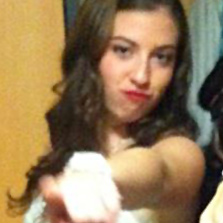 |
|||||
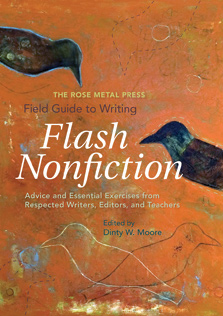 |
|||||
|
Visit Dinty W. Moore… brevitymag.com |
|||||









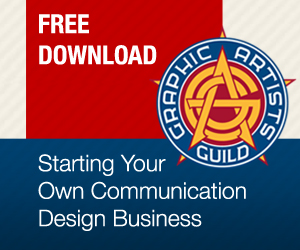
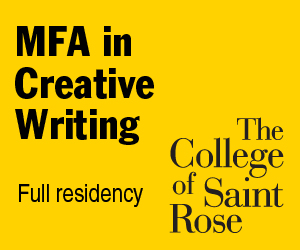
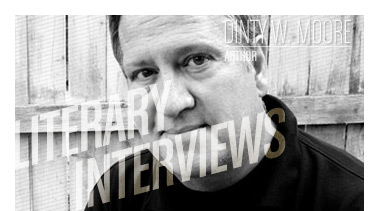
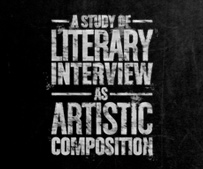














 Stated
Stated
Reader Comments